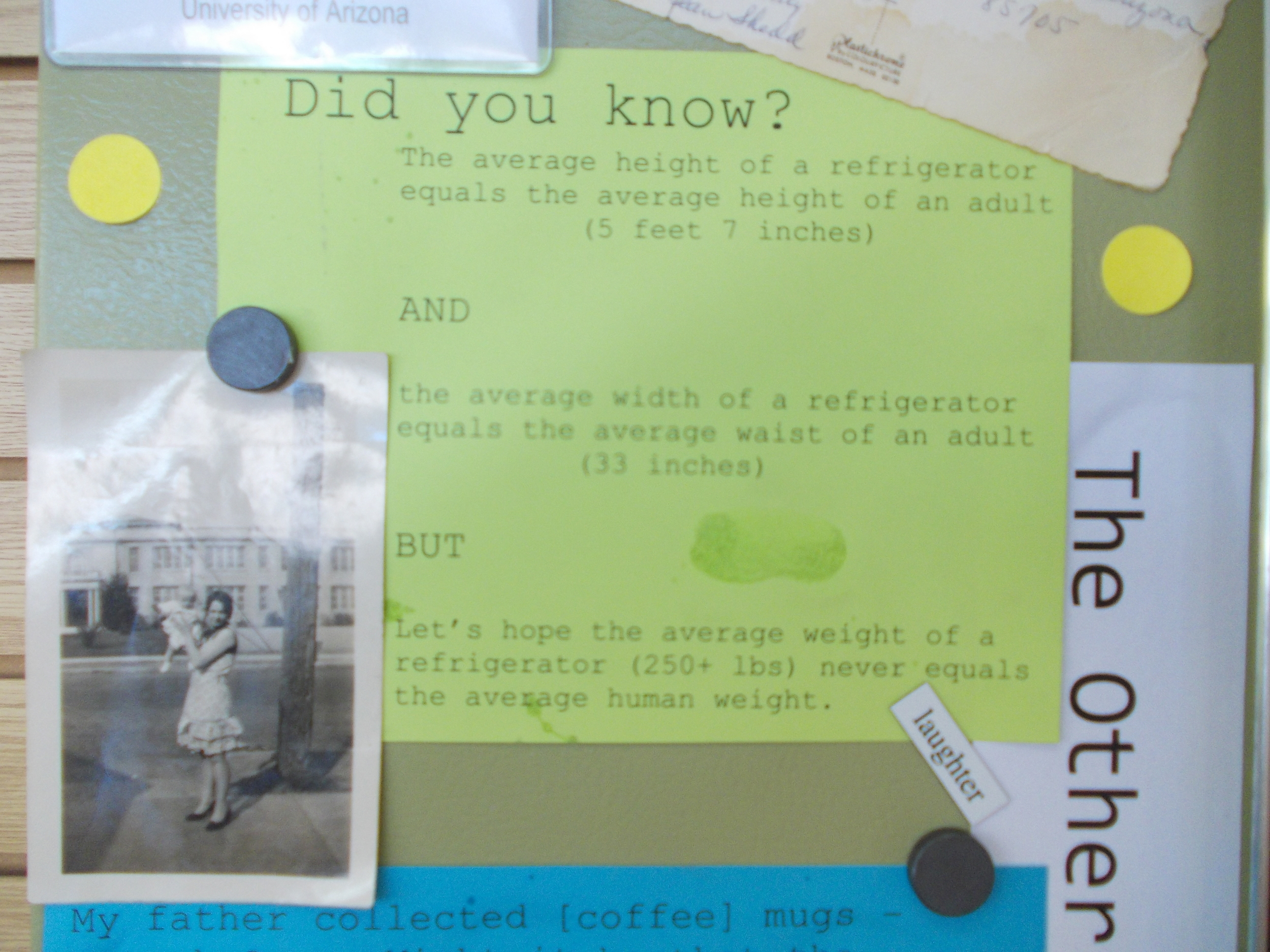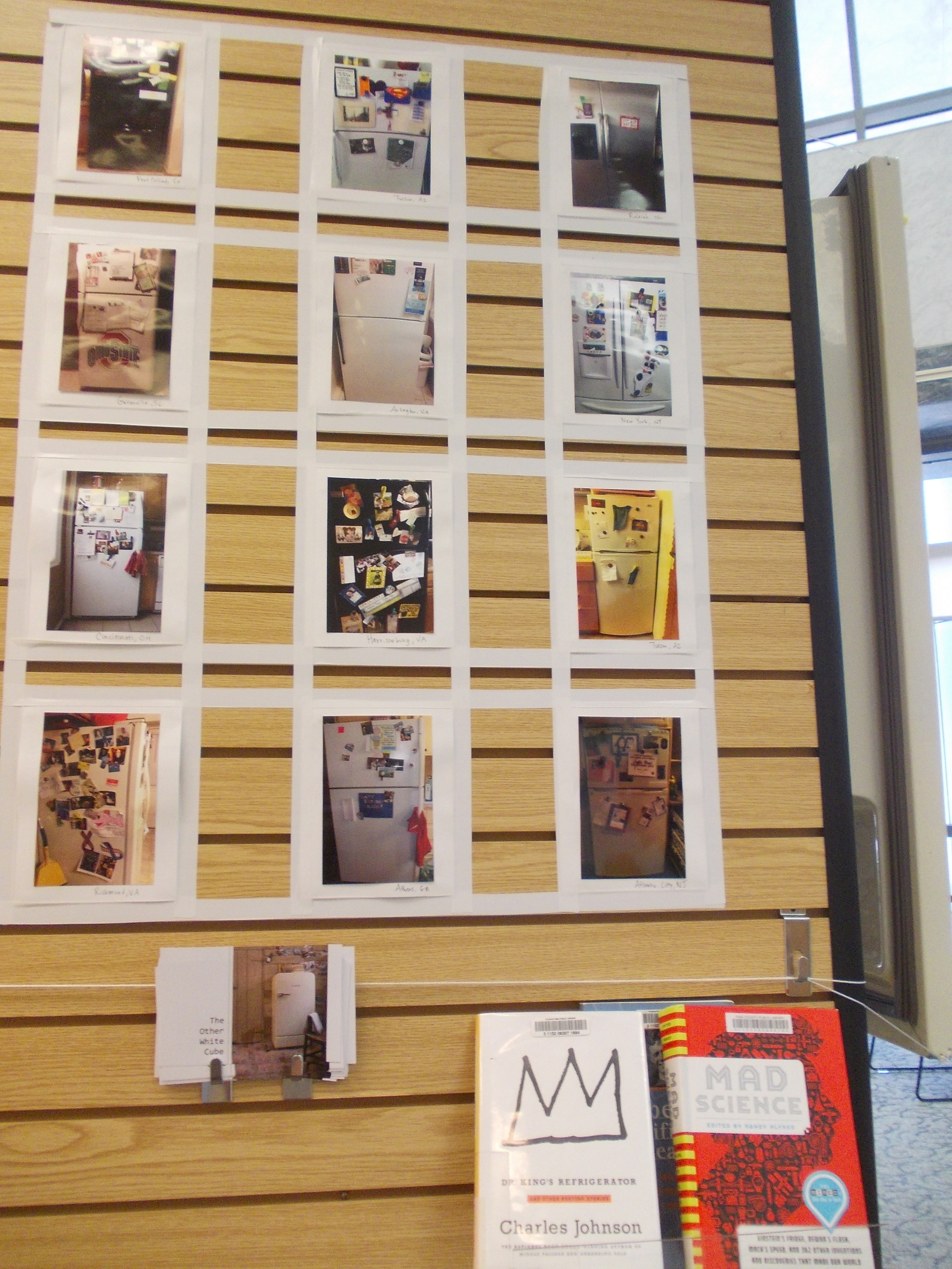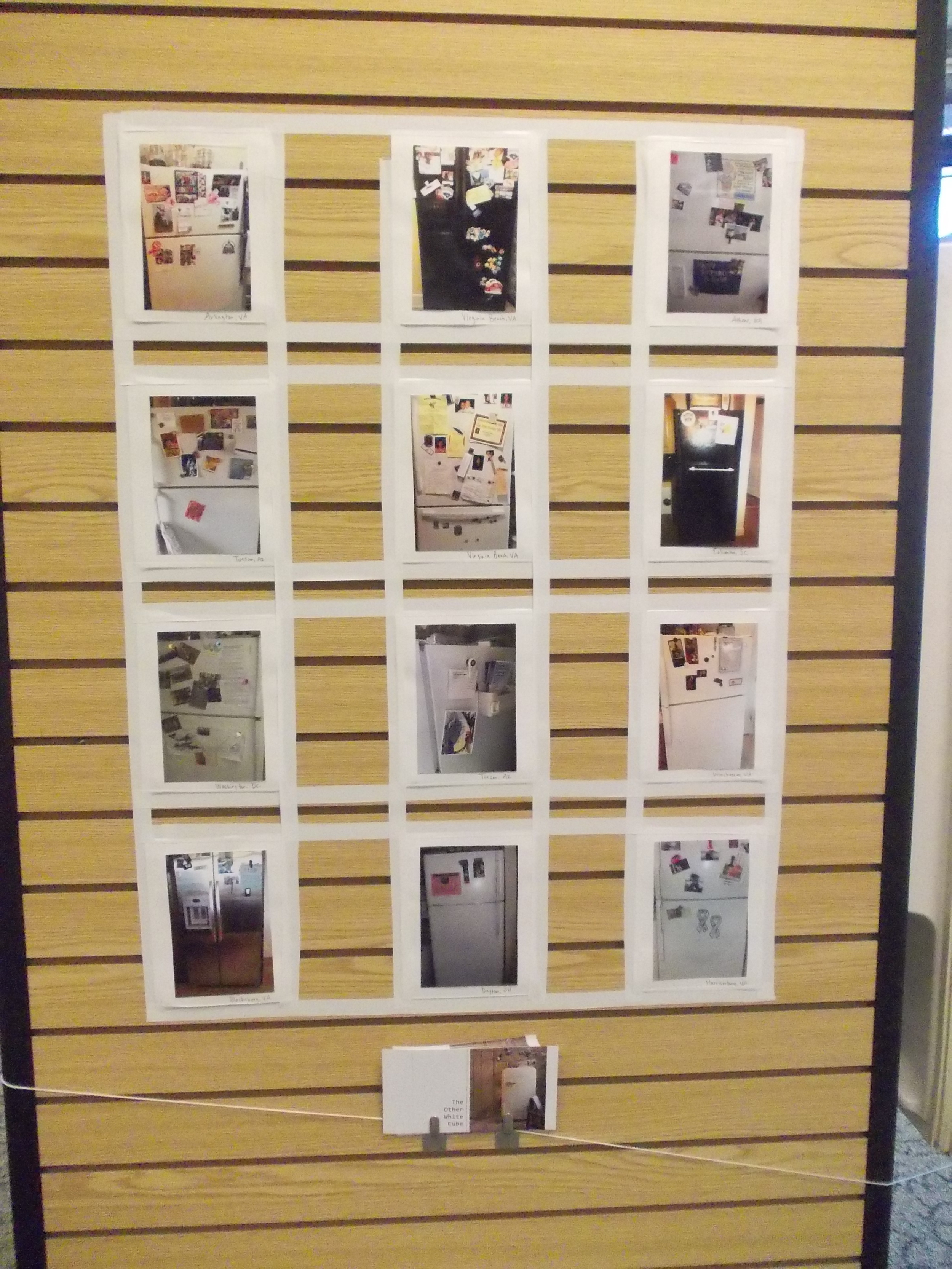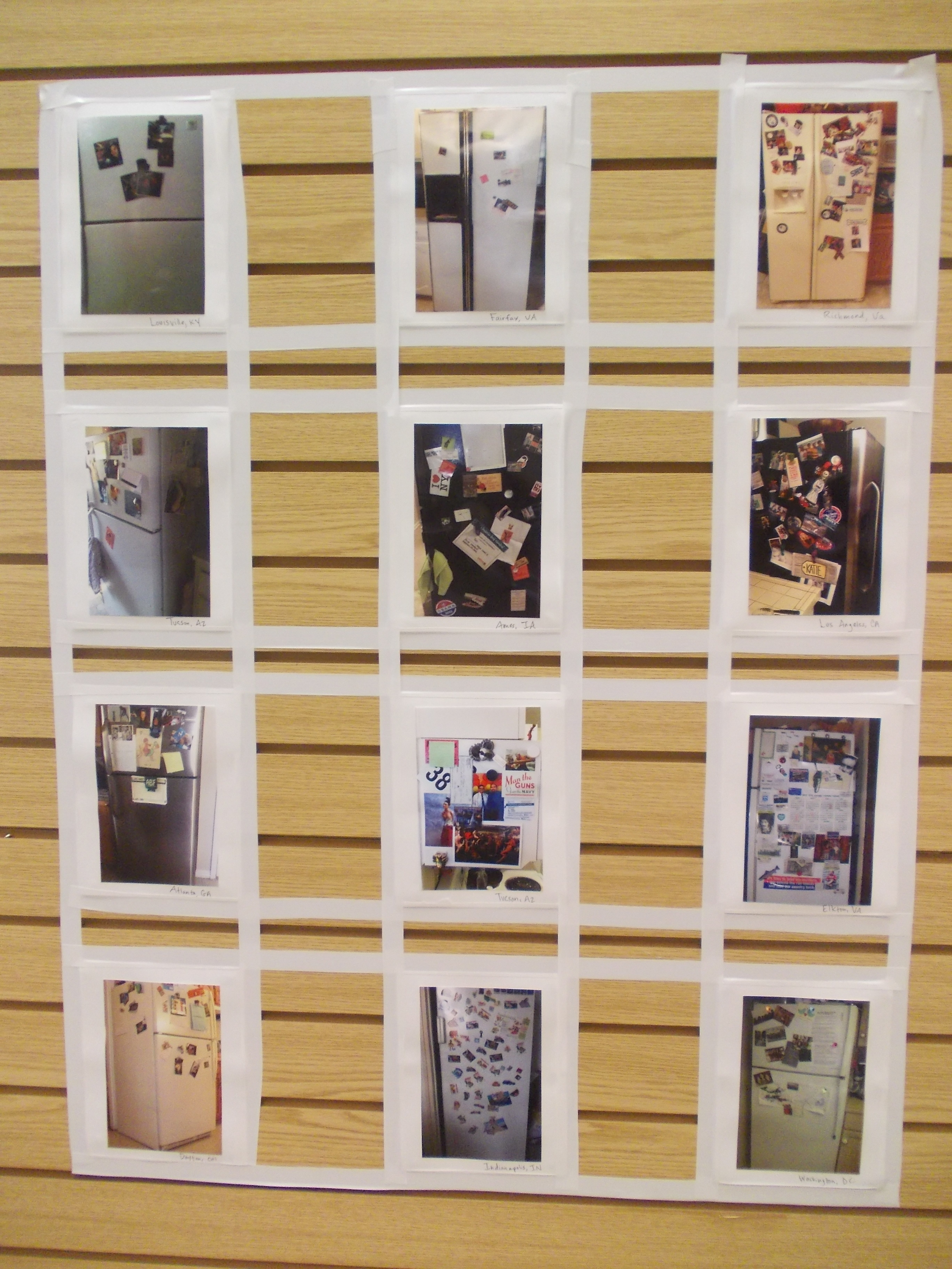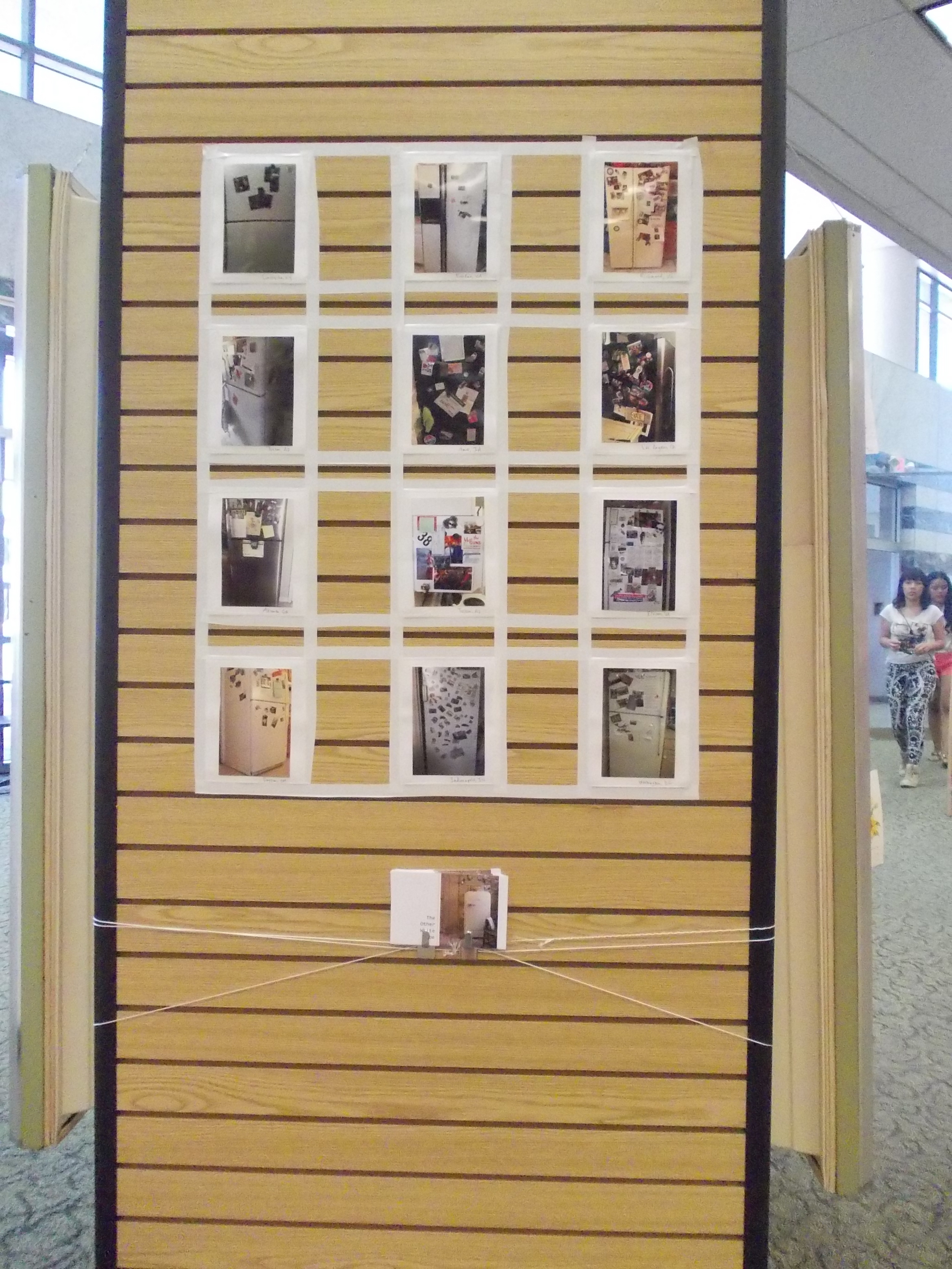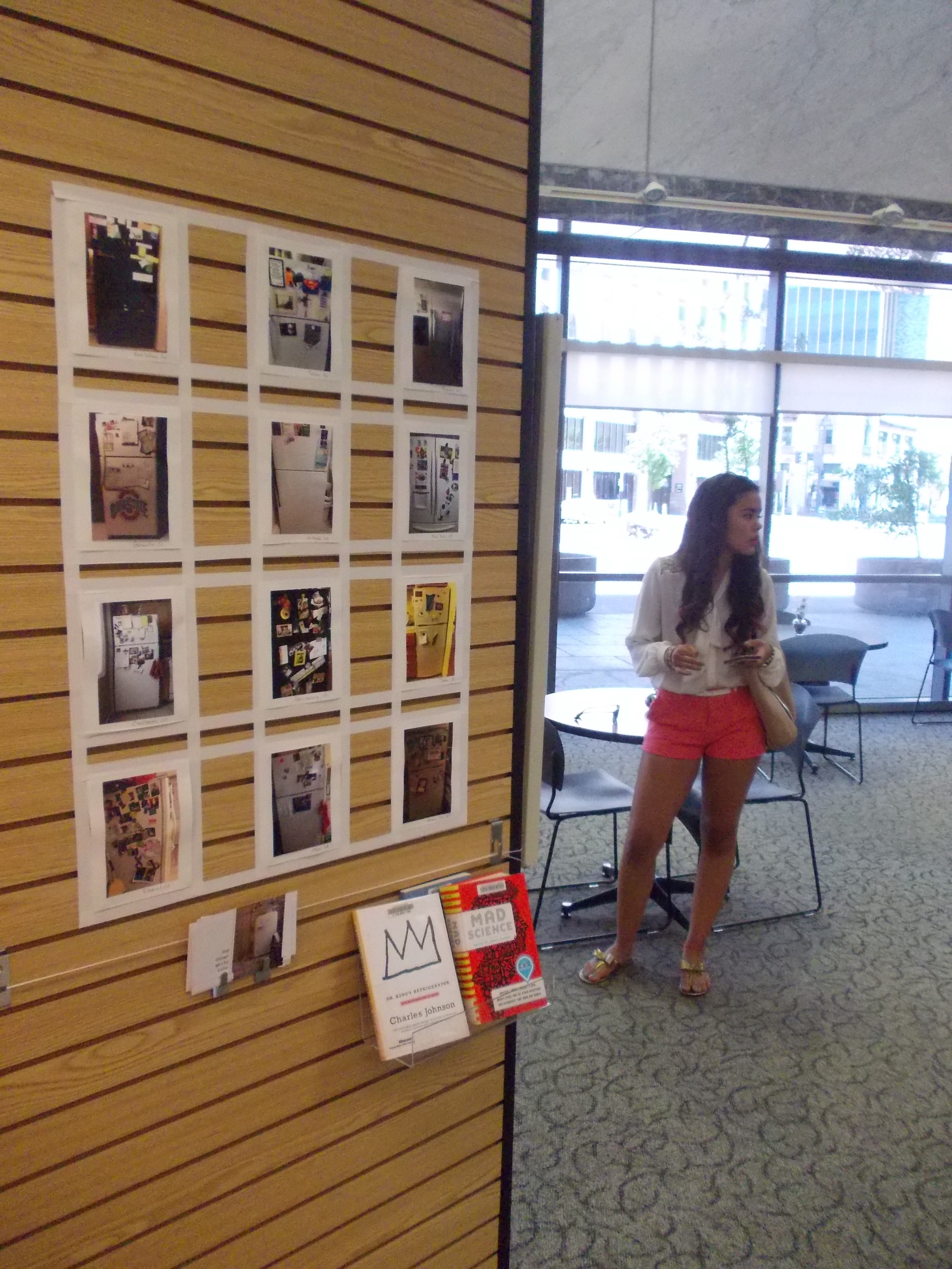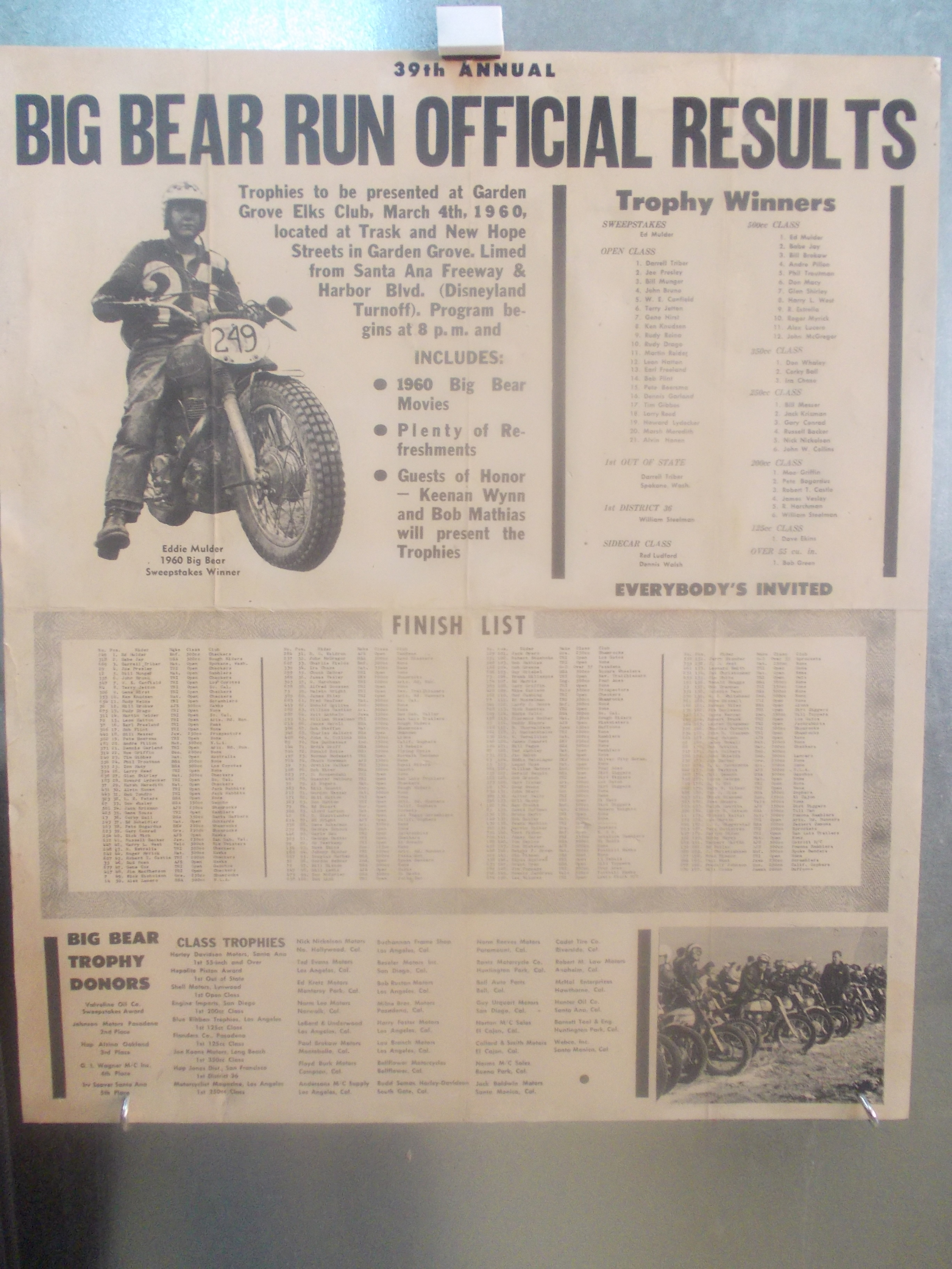Be content with what you have; rejoice in the way things are. When you realize there is nothing lacking, the whole world belongs to you.
-Lao Tzu, Tao Te Ching
We are happy in proportion to the things we can do without.
-Henry David Thoreau, Walden
ironically, around the time I launched the Other White Cube Project, I unplugged my refrigerator. I had no use for it; it had become a place to forget about food I once intended to eat. It seemed I cleaned out rotten food just as fast I replaced it with new produce, and I resented myself for it. Everybody plays the fool when they have to check the expiration date before eating something.
When things go out of sight - food in refrigerators, stuff in closets, trash to the landfill - memory of them recedes, and consumption continues without ethical reflection. Without confrontation, without immediacy, without the invasion of personal space - change remains a thing to be done tomorrow. I eat my food while it's fresh now because watching a plant wilt, soften, and die is neither fun nor appetizing.
I started researching and exploring refrigerator displays nearly five years ago, and it got me thinking about "stuff" - the literal clutter that fills our lives. I had just made my first major move on my own, from Columbia, SC to Cincinnati, OH, for graduate school. The move brought all of my possessions into light, and I went through the torturous process of purging. "Is this important to me anymore? Will I ever use this? Why do I even have this? What kind of person still uses soap in the age of body wash?"
It was a period of intense self-criticism and self-reflection, but the experience engendered an ethical review of my lifestyle. I realized that I didn't want things; I wanted freedom, space, and clarity. To me, physical clutter, at some point, always contributed to emotional messes. Memories and experiences were enough for me. Henceforth, I have - year by year, choice by choice - aimed for a humble but happy lifestyle. Slowly, things and my desire for them have faded away. I got rid of my car, later my television, then my furniture and bed. I stopped buying clothes, gadgets, gizmos, and other non-essentials. Eventually, I even quit drinking alcohol - something that shocked my friends and family (you would be too if you knew me in high school and college). For such a seemingly big change, it affected my life very minimally - I retain the same friends, go to the same places, meet the same people, and feel the same love. The same is true for the other things I have replaced, discarded, or decided not to buy. However, there is one remarkable result - without things to focus on, I concentrate more on my values, behavior, and significance in this world. Without things and objects to falsely and distractingly love, I have the time, space, and clarity to cultivate self-love and achieve self-affirmation.
Honestly, I have yet to reach a high level of either of those things, and my life, like many others', still remains debilitated by self-doubt and an over-analytical ego. But I'm learning to let go - of objects, emotions, regrets, and demands. I'm learning to live, and it all began with my refrigerator.
Not everyone will or should come to the same conclusions I have. We chart our own courses, make our own choices, and respond as best we can to the pressures in our lives. But it is important for everyone to take an ethical approach to life - "Is this important to me anymore? Will I ever use this? Why do I even have this? Really, soap?"
For the rest of May, I am returning home to be with my family - something I have neglected regretfully for an inexcusable amount of time. Before I can adequately and honestly start writing about the American home, I need to reconnect with mine - I miss the people, the landscape, and the pleasant quaintness of Virginia's Shenandoah Valley. While I'm gone, ask yourself the ethical questions outlined above. "What ultimately matters to me?" As someone who has peeked into many kitchens lately, I can assure you of this - you care less about the objects, the souvenirs, and the photographs. You care about the essentials - love, family, home, and happiness.











